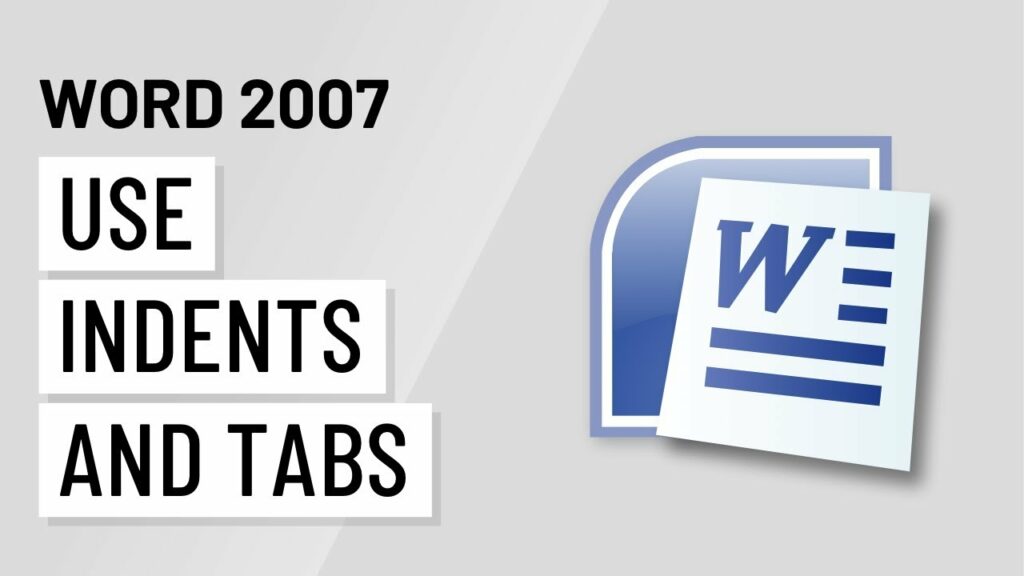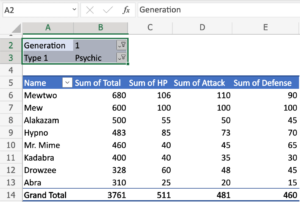Mastering Document Formatting: A Comprehensive Guide to Using Indents and Tabs in Microsoft Word 2007

Introduction:
In the realm of document formatting, Microsoft Word 2007 offers a plethora of tools to enhance readability and visual appeal. Among these tools, indents and tabs play a pivotal role in structuring content and creating well-organized documents. In this extensive guide, we will delve into the intricacies of using indents and tabs in Microsoft Word 2007, exploring their functionalities, customization options, and best practices for effective document formatting.
I. Understanding Indents and Tabs:
- Indents:
- Indents refer to the horizontal space between the margin and the beginning of a line of text. They are commonly used to signify new paragraphs or to visually separate content within a document.
- Tabs:
- Tabs are vertical markers that facilitate precise alignment of text within a document. They allow users to control the placement of text at specific intervals, enhancing readability and structure.
II. Accessing Indents and Tabs Options:
- Ruler Bar:
- The ruler bar in Microsoft Word 2007 provides convenient access to indent and tab settings. Users can manipulate markers and adjust settings directly from the ruler bar.
- Paragraph Dialog Box:
- Access additional indent and tab options through the Paragraph dialog box. This comprehensive tool offers precise control over indentation, alignment, and tab stops.
III. Setting Paragraph Indents:
- First Line Indent:
- Create a first-line indent to signify the beginning of a new paragraph. This indentation is commonly used in academic writing, articles, and reports.
- Hanging Indent:
- Employ a hanging indent to format lists, bibliographies, and references. This style features a first-line indent, followed by subsequent lines indented to the right.
IV. Customizing Tab Stops:
- Left Tab:
- The left tab aligns text to the left of the tab stop. It serves as the default tab alignment and is commonly used for paragraph alignment.
- Center Tab:
- Center tabs position text equidistant from both the left and right margins. They are useful for titles, headings, and centered text alignment.
- Right Tab:
- Right tabs align text to the right of the tab stop. They are often used for numerical data, such as dates, amounts, or page numbers.
- Decimal Tab:
- Decimal tabs align numerical data based on the position of the decimal point. They facilitate precise alignment of monetary values, measurements, and statistical data.
V. Utilizing Indents and Tabs for Document Formatting:
- Creating Structured Documents:
- Use indents and tabs to create structured documents with clear visual hierarchy. Indented paragraphs and aligned text enhance readability and organization.
- Formatting Lists and Outlines:
- Employ indents and tabs to format lists, outlines, and nested content. Consistent indentation and alignment improve the clarity and coherence of document outlines.
VI. Advanced Indent and Tab Techniques:
- Nested Indents and Tabs:
- Explore nested indents and tabs to create complex document structures. This technique allows for multi-level outlines, tables of contents, and nested lists.
- Combining Indents and Tabs:
- Combine indents and tabs to achieve precise text alignment and formatting. Experiment with different combinations to achieve the desired visual effect.
VII. Managing Indents and Tabs:
- Clearing Indents and Tabs:
- Clear unwanted indents and tabs to maintain document consistency. Use the Clear Formatting option to reset paragraph formatting and remove unwanted indents and tabs.
- Adjusting Tab Stops:
- Modify tab stops to accommodate changes in document layout or formatting. Drag tab markers on the ruler bar to reposition tab stops and adjust text alignment.
VIII. Document Navigation and Editing with Indents and Tabs:
- Navigating Text with Tabs:
- Utilize tab stops for efficient text navigation and alignment. Move between tab stops using the Tab key to align text and navigate document content.
- Editing Paragraphs with Indents:
- Edit paragraph formatting and indentation to refine document structure. Adjust indents to create uniform spacing and improve the overall appearance of the document.
IX. Document Accessibility and Indents/Tabs:
- Consistent Formatting for Accessibility:
- Maintain consistent indentation and tab settings for improved document accessibility. Clear formatting inconsistencies to ensure readability for all users.
- Screen Reader Compatibility:
- Test documents with screen readers to verify compatibility with assistive technologies. Use clear and consistent indentation and tab settings to enhance document accessibility.
X. Mastering Indents and Tabs Techniques:
- Continuous Learning:
- Mastery of indents and tabs techniques involves continuous learning and practice. Explore advanced features and experiment with different formatting options.
- Community and Online Resources:
- Engage with the community and leverage online resources, tutorials, and forums to expand your knowledge of indents and tabs in Microsoft Word 2007.
XI. Conclusion:
- Enhancing Document Structure and Readability:
- By mastering the art of using indents and tabs in Microsoft Word 2007, users can enhance document structure, readability, and visual appeal.
- Efficient Document Formatting:
- Striking the perfect balance between functionality and aesthetics, Word 2007’s indent and tab features empower users to create polished and well-organized documents for various purposes.
As you embark on the journey of using indents and tabs in Microsoft Word 2007, you unlock the potential to create documents that are not only visually appealing but also structured and easy to navigate. Embrace the diverse features, experiment with different formatting techniques, and empower yourself to produce documents that convey information effectively and efficiently.







